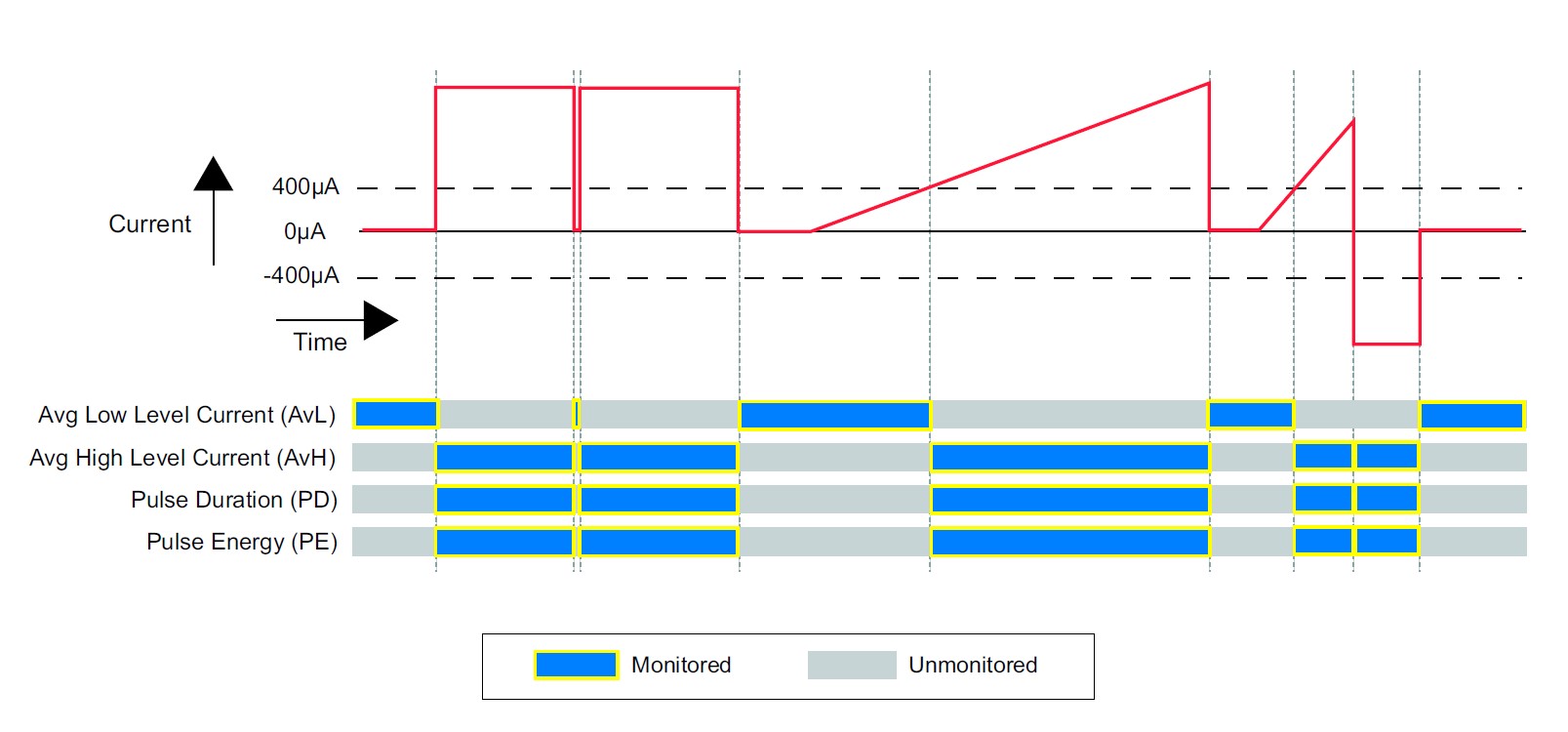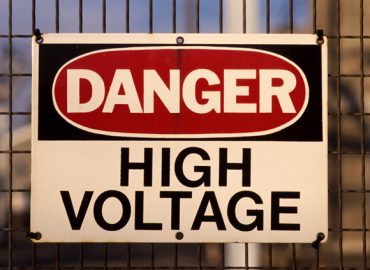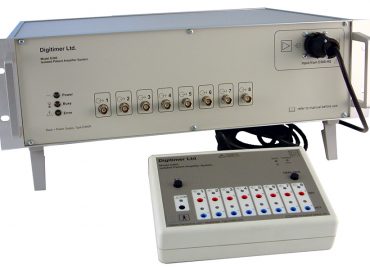DS5 Bipolar Constant Current Stimulator
Understanding Output Limits & Stimulus Monitoring
Introduction
In contrast with our other isolated electrical stimulators like the DS7A or DS8R, the DS5 Bipolar Constant Current Stimulator is controlled by an analogue voltage waveform which it uses as a template for an isolated current stimulus. This means that rather than delivering single discrete rectangular pulses of current in response to a TTL trigger input, the DS5 can be used to produce completely arbitrary stimulus shapes, based on the characteristics of the input signal it receives from software via a DAQ system or other waveform generator. As a result, the DS5 is extremely versatile and ideally suited to applications where PC-based external control or fully automated stimulation protocols are undertaken. An example would be the use of the DS5 in nerve excitability testing using threshold tracking techniques developed by Prof. Hugh Bostock and made possible via his QtracW software.
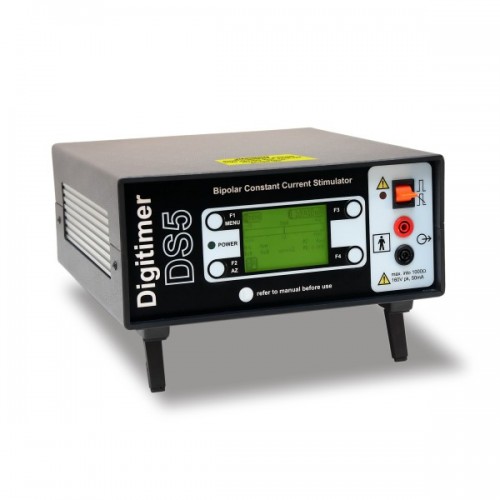
Balancing Device Performance with Safety
Of course, safety is of paramount importance when designing an electrical stimulator for use in human research or clinical neurophysiological investigations, and in order to meet the relevant medical device standards, the Digitimer DS5 Bipolar Constant Current Stimulator incorporates multiple safety features, many of which will never be apparent to the operator.
However, because of the way the DS5 is controlled, Digitimer engineers also had to develop novel strategies to monitor the DS5 output pulse parameters in real-time. Such monitoring was necessary so that the DS5 stimulator output could be shutdown if any of these parameters exceeded the limits of the applicable medical device standards. In the case of the DS5, it monitors and controls four output limits, relating to the stimulus pulse energy, baseline/stimulus current levels and pulse duration.
In order to provide a degree of freedom in human research studies, some of the DS5’s output limits may be deactivated by the operator. It should be noted that even when these limits are deactivated, they generally do not remove the limits entirely, but merely shift them to more flexible values. These new values were specifically selected so they did not compromise the safety of the subject.
By default the DS5 is factory configured with four output limits enabled. Through use of the Operator Interface, these four limits can be toggled on and off. The table below gives the values for these limits and those that are implemented when they are disabled.
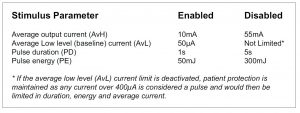
How Stimulus Monitoring Interacts with Stimulus Protocols
Below is a plot of stimulus current (red line) against time, which illustrates how each of the stimulus parameters is monitored. For the purposes of defining stimulation waveforms, the operator should note that the DS5 will identify a stimulus pulse as having been initiated when a current of over ±400μA is detected at the output, whereupon, the DS5 will stop monitoring the baseline current (AvL) and start to monitor the parameters relating to a stimulation pulse (AvH, PD and PE), disabling the output if any of these exceed the pre-set limits.
If the amplitude then falls within ±400μA for a period of >200μs, the DS5 reverts to monitoring AvL. If the polarity of the pulse greater than ±400μA was to change instantaneously, crossing zero, then the DS5 would interpret this as the termination of one pulse and the initiation of another. As soon as the DS5 switches to monitoring AvL, it resets the values held in AvH, PD and PE until the next pulse is initiated.
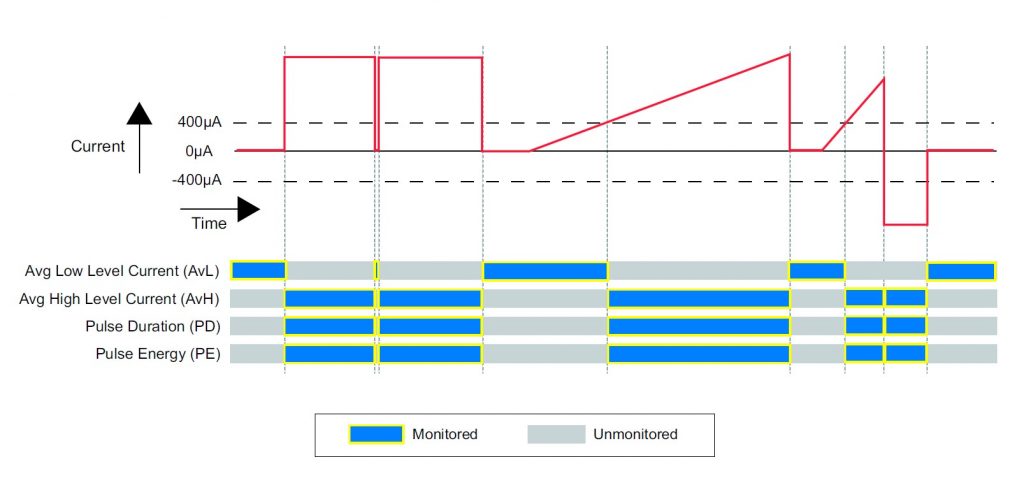
Any potential user of the DS5 stimulator should check whether their proposed stimulation parameters will be affected by these output limits either in their active or deactivated settings. For further guidance please feel free to contact Digitimer or any of our representatives.
